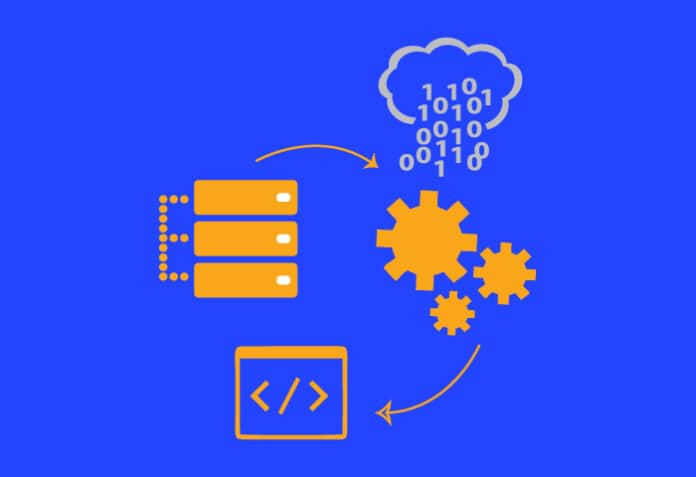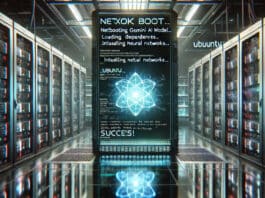IaC is the art of defining infrastructure using code, making it repeatable and predictable. With cloud orchestration, you can deploy and manage your infrastructure in a more agile and efficient way. No more manual configurations or guesswork!
What is it that makes Infrastructure as Code (IaC) one of the greatest technologies in the cloud scenario of the 21st century? Well, it is IaC that powers cloud infrastructure. Supported by various highly innovative features and tools, IaC automates IT infrastructure, empowering organisations to quickly build, deploy, and scale cost-efficient cloud applications.
IaC: A blessing for cloud optimisation?
Infrastructure encompasses various components required to deploy software in a cloud environment, such as VMs, containers, serverless functions, security features like IAM (identity and access management) and KMS (key management service), networking, and monitoring and logging capabilities.
Now, let’s look at the Google Play Store. You download tens to hundreds of apps to your Android device from there. In the past, updating these apps required manual effort. You had to individually check for updates and install them. However, with IaC in place, the process becomes seamless and automated. Through well-defined code and configuration files, the infrastructure behind the Play Store can automatically detect app updates and efficiently roll out the new versions to users’ devices. This ensures that users have the latest features and bug fixes without the need for manual intervention. Thanks to IaC, your apps are now automatically updated.
Virtualisation and cloud development eliminate the challenges of physical hardware management, allowing developers to build their own virtual servers or containers.
As technology rapidly evolves, it is important for IT infrastructure development staff to set up and update the cloud environment from time to time. Data administrators need to determine the resources required for coding, ranging from network configuration to data storage in cloud environments.
IaC: A force to be reckoned with in cloud orchestration
IaC is playing an important role in IT supporting frameworks like servers, hard disk drives, etc; applying security updates, installing services and applications, establishing networks, and managing memory. It overcomes common IT problems such as configuration drifting, operator mistakes, inefficiencies and information loss. Flexible licensing models and reduced maintenance costs are a few factors contributing to the dominance of IaC in cloud orchestration.
With evolving consumer behaviour and demands, enterprises must act to stay competitive in the market. Consequently, cloud infrastructures are expanding and IaC is the only method that can handle the complexities associated with them.
Large-scale organisations, such as those in telecommunications, retail, and manufacturing sectors, often struggle to meet customer demands due to work delays. To increase work speed and minimise human errors, automation of cloud infrastructure becomes essential for such organisations. Hence, they are increasingly opting for IaC.
The IaC market size is projected to grow from US$ 0.8 billion in 2022 to US$ 2.3 billion in 2027, at a CAGR of 24% during the forecast period.
| Cloud Provider | IaC | Language used |
| Google Cloud Platform | Deployment Manager | YAML |
| Amazon Web Services (AWS) | Cloud Formation | YAML or JSON |
| Microsoft Azure | Azure Resource Manager | JSON |
Table 1: The different versions of IaC developed and used by the major cloud providers
Strategies for joining the big league of cloud orchestration
Cloud orchestration has experienced various waves of development. In the first wave, infrastructures were fairly static. The second wave introduced more complexity with the use of containers, Docker and Datadog. Modern cloud infrastructure is even more complex, leveraging serverless and managed services as part of cloud applications.
It is important to note that all major cloud providers have their own version of IaC, using different languages and syntax to render code. Table 1 provides an overview.
Developers have gained enormous potential and convenience from the cloud with its elastic capabilities and API based architectures. However, GitHub and Bitbucket have also become valuable sources for attackers. These attackers leverage automation to quickly and efficiently harvest stray credentials, creating more opportunities.
In the current environment, automation is omnipresent, particularly in the form of ALOps, robotic process automation (RPA), and other machine-driven tools. Consequently, a multi-cloud environment needs higher levels of automation.
Configuration tracking and capabilities are becoming essential in the modern cloud context, especially in sectors like healthcare. Cloud administrators often need to detect idle users, disconnect them, drain hosts, and shut down unnecessary servers to minimise runup costs.
They need to monitor service accounts, cloud billing accounts and side effects of automation such as large scale cloud costs.
IaC tools for cloud orchestration
IaC tools include AWS CloudFormation, Red Hat Ansible, Chef, Puppet, SaltStack and HashiCorp Terraform. Some tools rely on domain-specific languages (DSLs), while others use standard template formats like YAML and JSON.
Terraform: Terraform is a declarative provisioning and infrastructure orchestration tool that allows engineers to automate all aspects of their cloud-based infrastructure.
It works with all the leading cloud providers and enables the automation of resource deployment across multiple providers in parallel, regardless of the physical location of servers, DNS servers, or databases. It can handle applications written in any programming language.
SCARLETEEL, a recent cyber attacker, is an excellent example of how IaC machinery was exploited to expand its reach. In this case, Terraform was used by the cloud administration, and files were stored in an S3 bucket.
Another way to define IaC is by using a well-known programming language. For instance, Pulumi can be used to write IaC using TypeScript, JavaScript, Python, Go, and .NET.
Red Hat’s Ansible: Red Hat’s Ansible is an open source automation platform that enables IT automation across cloud, on-premises, and virtualised and containerised environments. It reduces human capital, and develops more repeatable and standardised processes. Its use of the YAML language makes it more accessible. The open source model of Ansible allows anyone to contribute ideas and share them across the Ansible user community.
IBM, which acquired Red Hat for US$ 34 billion in 2019, has integrated Ansible into its Global Technology Services (GTS) organisation, a division of IBM Services.
SaltStack: SaltStack, also known as Salt, is a configuration management and orchestration tool. It uses a central repository to provide new servers and make changes to existing ones. It also helps with software installation in various IT environments, including physical and virtual servers, as well as the cloud.
Chef: Terraform is a provisioning tool, while Chef is a configuration management tool. Terraform provisions the servers, while Chef manages the software already installed on the servers.
Puppet: Puppet allows the definition of required software and configuration for a system, maintaining a specified state after the initial setup. It uses a declarative domain specific language (DSL) that is similar to Ruby to define configuration parameters for specific environments or infrastructures.
The future of IaC depends upon technological advancements and the attitudes of cloud administrators. The objective of cloud automation is not to replace humans with machines but to make work life more meaningful.




